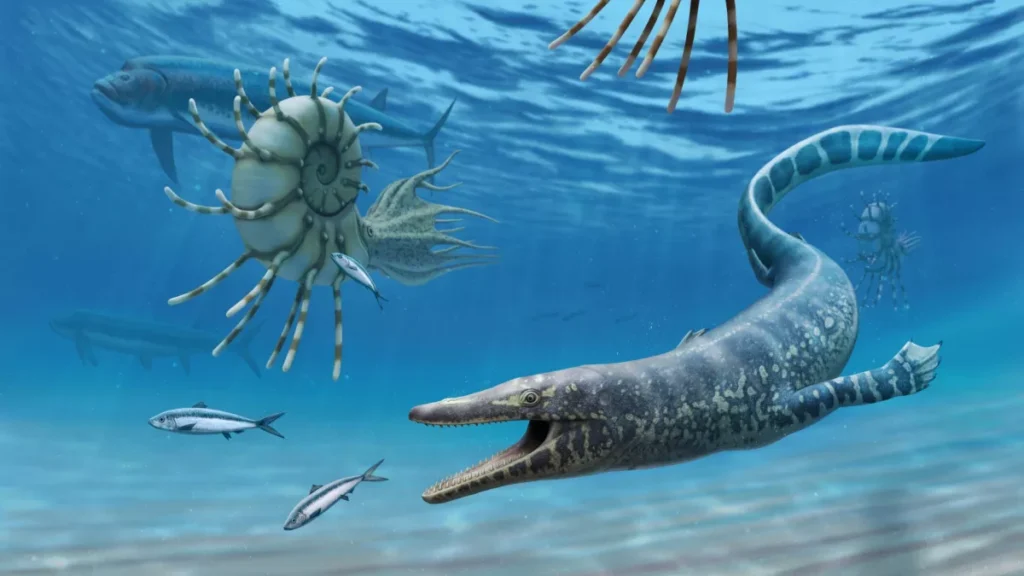A group of scientists revealed a minuscule mosasaur fossil within the gray shale formations of southern Utah. This find holds the potential to deepen our understanding of the evolutionary history of these ancient sea creatures.
In the Enigmatic Grayscale Canvases of Southern Utah, a Fossil Tale Unfolds: The Saga of Sarabosaurus dahli, North America’s Oldest Maritime Lizard Discovered After 94 Million Years”
In the craggy embrace of southern Utah’s gray shale landscapes, a team of scientific adventurers has unearthed the ancient secrets of a mosasaur, a prehistoric sea wanderer from a bygone era 94 million years ago. With jaws adorned in sharp teeth and an undiscovered lineage, this reptilian enigma now claims its place as the oldest known mosasaur fossil on North American soil, a revelation chronicled in a groundbreaking study published in the journal Cretaceous Research.
These marine marvels, known as mosasaurs, once ruled the Cretaceous seas (145 million to 66 million years ago), and the Utah region, now arid and rocky, was once submerged beneath the Western Interior Seaway. This seaway, a prehistoric marine expanse stretching from the Gulf of Mexico to the Arctic Circle, severed North America in two.
Amid the age of dinosaurs, mosasaurs, with elongated tails and paddle-like appendages, pursued their prey, some reaching colossal lengths of up to 56 feet (17 meters), as documented in a 2014 study published in the Proceedings of the Zoological Institute RAS.
The newfound species, estimated at a modest 10 feet (3 meters) in length, emerges as a relic of a time when mosasaurs were in the nascent stages of marine adaptation. Barry Albright, co-author and paleontologist at the University of North Florida, notes, “During the time the Tropic Shale was being deposited, about 94 million years ago, mosasaurs were still very small, primitive, and in the early evolutionary stages of becoming fully marine adapted. For these reasons, their fossils are extremely rare and difficult to find.”
The odyssey of discovery commenced in 2012, with scientists unearthing the initial fragment of the mosasaur’s fossil. Over two arduous field seasons, they meticulously pieced together nearly half of the ancient mariner, ultimately classifying it as a new species.
The fossil, weathered by the passage of time on the surface, posed a puzzle for analysis. Michael Polcyn, lead author and paleontologist at Southern Methodist University in Texas and Utrecht University in the Netherlands, recounts, “So it was not in pristine condition… [It] took a lot of detailed comparisons to work out all of the anatomy and understand its relationships.”
The creature now bears the moniker Sarabosaurus dahli, translating to “lizard of the desert mirage.” This distinctive name honors the team’s volunteer, Steve Dahl, and pays tribute to the mirages dancing across the scorching Tropic Shale badlands in the summertime.
While early mosasaur species mirrored lizards in appearance and limb structure, S. dahli stands apart in its cerebral circulation, potentially offering insights into its prowess in the marine realm. Polcyn speculates, “It may possibly be related to countering effects of deep or long duration diving in this group.”
The legacy of Sarabosaurus dahli transcends its discovery, providing a unique lens into mosasaur evolution. The team contends that this newfound species pushes the timeline of major divisions (subfamilies) within mosasaurs further back than previously conceived, adding a new chapter to the ancient narrative etched in the stone records of time.
